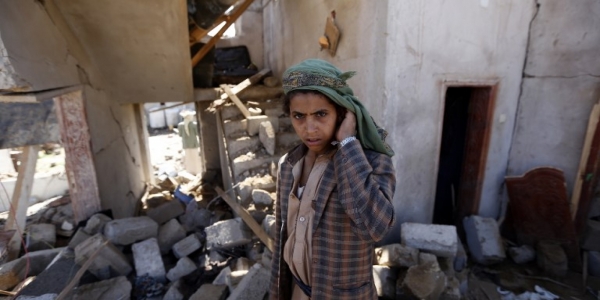Syria’s siege and displacements
Syria remains one of the most complex and dynamic humanitarian crises in the world today. Six years of conflict have resulted in large-scale population displacement with more than half of the pre-crisis population forced to leave their homes. Nearly 3 million people are trapped in besieged and hard-to-reach areas, while chemical weapons continue to be deployed against civilians to horrifying effect.
DR Congo mega crisis
For the second consecutive year, DR Congo is the worst-affected country for conflict displacement. More than 1.7 million people abandoned their farms and villages last year, on top of 922,000 in 2016. The provinces of North Kivu, South Kivu, Kasai, and Tanganyika are the worst affected and the epicentres of unrest in the country. As we begin 2018, more than 13 million people require humanitarian assistance and protection – close to six million more people than at the start of 2017
Yemen’s looming famine
Even before fighting broke out in early 2015, Yemen was one of the poorest countries in the Arab world. As of today, 8.4 million people are on the verge of starvation; 400,000 children have severe acute malnutrition, and more than 5,500 civilians have been killed.
South Sudan’s grinding conflict
South Sudan, which split off from its northern neighbour Sudan in 2011, has been gripped by a civil war sparked by political rivalry between incumbent leader Salva Kiir and his former deputy Riek Machar. Seven million people inside the country – almost two thirds of the remaining population – is in need of humanitarian assistance; hunger will also continue to threaten millions as a result of armed conflict, displacement, and collapse of the rural economy. And the threat of renewed famine is expected.
Rohingya refugee crisis
After a catastrophic year in which more than 665,000 people were driven out of Myanmar’s Rakhine State, the new year brings a host of new questions. Humanitarian actors continue to build the necessary infrastructure to support refugee camps in bordering Bangladesh, in very challenging conditions and with extremely limited space. Whether these fragile settlements can withstand ever-increasing demands, or the upcoming seasonal monsoon rains is unknown. Also unknown is whether Bangladesh and Myanmar authorities will try to make good on a plan to repatriate Rohingya refugees.
For more information, read:
http://www.irinnews.org/feature/2018/01/01/ten-humanitarian-crises-look-out-2018







